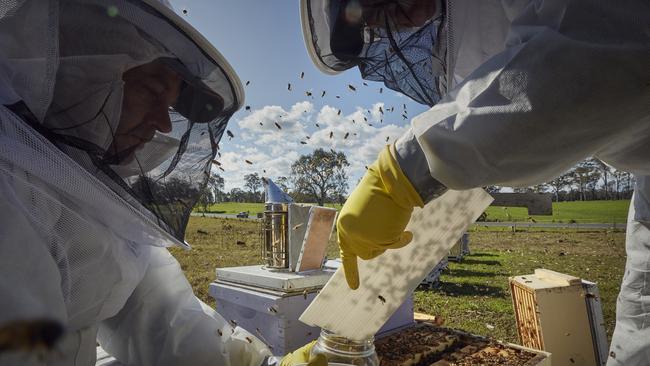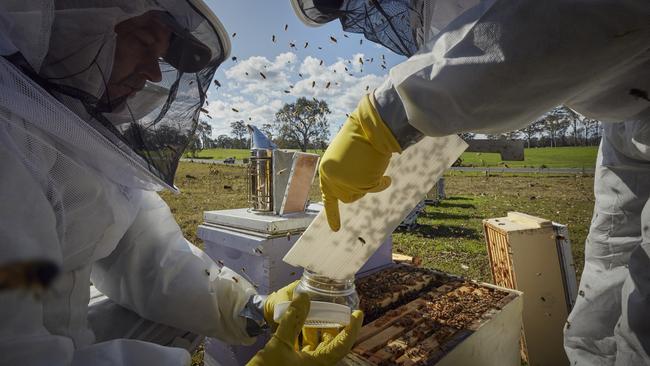Varroa mite: The cost for beekeepers when the mite hits
Two years to the day since varroa mite was detected and beekeepers are anxious ahead of annual mass pollination across state borders.

Living with varroa mite could add thousands of dollars worth of operational costs for beekeepers annually.
It comes as producers prepare for the mass migration of thousands of hives for almond pollination in the coming months.
Nearly two years to the day have passed since the mite was first detected in NSW, and Victorian Apiarist’s Association president John van Weeghel said many local beekeepers were “nervous” ahead of pollination.
“We know it is going to come, we don’t know when or where,” Mr van Weeghel said.
“No one wants to be the first to find it in their hives.”
Mr van Weeghel said mite management could add an estimated $30 per hive per season in labour and chemical costs.
“If you’ve got someone running 1000 hives, that’s $30,000,” he said.
A 2023 Hort Innovation report found about 644,000 honey bee hives were used for pollination in 2021, with that figure expected to grow to 952,000 in the next 10 years.
At present, the mite has not been detected in Victoria.
An Agriculture Victoria control area order requires a permit for all bees and bee products moved into the state, allowing entry of bees, hives, and equipment providing beekeepers are free of varroa mite.
Crop Pollination Association of Australia president Steve Fuller said the industry’s biggest problem was the sense of the unknown.

“We don’t know what we’re dealing with,” Mr Fuller said.
“This is the third almond pollination since the incursion, and we still haven’t got 100 per cent plans in place.”
Mr Fuller estimated the cost for beekeepers for chemical treatments and labour could exceed $50 per hive, on top of bee losses due to the mite and low honey prices.
“Almond pollination is not an easy event. It’s the largest mass migration of livestock in Australia’s calendar, and it’s a multi-billion dollar industry. And it’s growing,” he said.
According to the Victorian Apiarist’s Association, beekeeping is worth more than $260 million to Victoria off the back of honey and hive products, and the value of pollination services.
Mr van Weeghel said a number of chemical treatments for varroa mite were not approved in Australia in 2022. Many were now available in NSW but not yet Victoria; producers would have access to them upon detection of the mite in the state.
“It’s not used as a preventive, it’s only used as a cure,” Mr van Weeghel said.
Despite the anxiety throughout the industry, Mr van Weeghel said long-term prospects for the honey and beekeeping industry were positive, with possible opportunities for beekeepers for pollination if feral hives were killed by the mite.





